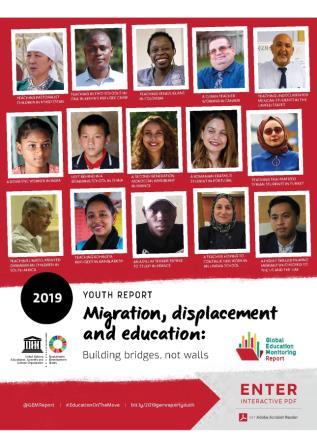01-03-2019 | “I remember leaving my hometown at the age of 13 to go to the Starehe Girls Centre, a centre for excellence for academically talented girls from disadvantaged backgrounds, more than 8 hours’ drive from my hometown in Kisumu. It was my first time leaving home.
I had never been to this part of Kenya, but this was my only opportunity to attend high school. Even though English and Swahili were the official languages for communication, most of the students were from the region and spoke the regional language, so it was hard to mingle after school hours. As a student, when you are homesick it’s always much easier to express yourself fully in your own language than it is in the official language of communication.
The situation got worse during the post-election violence in 2007. I happened to belong to one of the ethnic groups involved, but I was living in the region of the opposite ethnic group. On our way back to school from the holidays, we were stopped by rogues, who asked each passenger their full name before they would allow us to proceed with the journey. I made up a last name just to feel safe. And it helped that I knew how to respond to greetings in their language. Incidents like that can be very discouraging and frightening to a student, yet even in these kinds of conditions, many still manage to leave their homes and travel far away to try to get access to a safe and quality education.
Access to education should never be a matter of life and death, or of social status – education is every child’s birthright. This report on #EducationOnTheMove is about those of us as young people who have had to move from one region or country to another in search of education, work or security. Some of the stories are disheartening because young people have had to face violence, hunger and lack of shelter or proper clothing just to have access to an opportunity that could lift them out of poverty, take them away from threats and give them dignity. Such stories remind us of the reforms that need to be carried out in education across the world to make it inclusive and to promote social cohesion.
The hope is that you will use this report to recognize where injustices are happening to you or those around you and empower yourself to speak up. The report includes recommendations for governments to help them address the education needs of migrant and displaced populations.
As the next generation of leaders, we must use the power of our voices to hold our leaders accountable and make sure they deliver for migrants and refugees. Lots of positive things are happening to help migrants and refugees today, from new global compacts committing countries to education improvement, to regional declarations on inclusive refugee education, and countless innovations aimed at making things better by countries such as Canada, Chad, the Philippines, Turkey and Uganda.
I count on you to use this report to inform yourself, share your story and be vocal on the importance of proper education and learning for everyone, including migrants and refugees”
Inleiding bij het GEMR 2019 Youth Report, Migration, displacement and education: building bridges, not walls
door Vivian Onano
Jongerenvertegenwoordiger in de Adviesraad van het Global Education Monitoring Report

